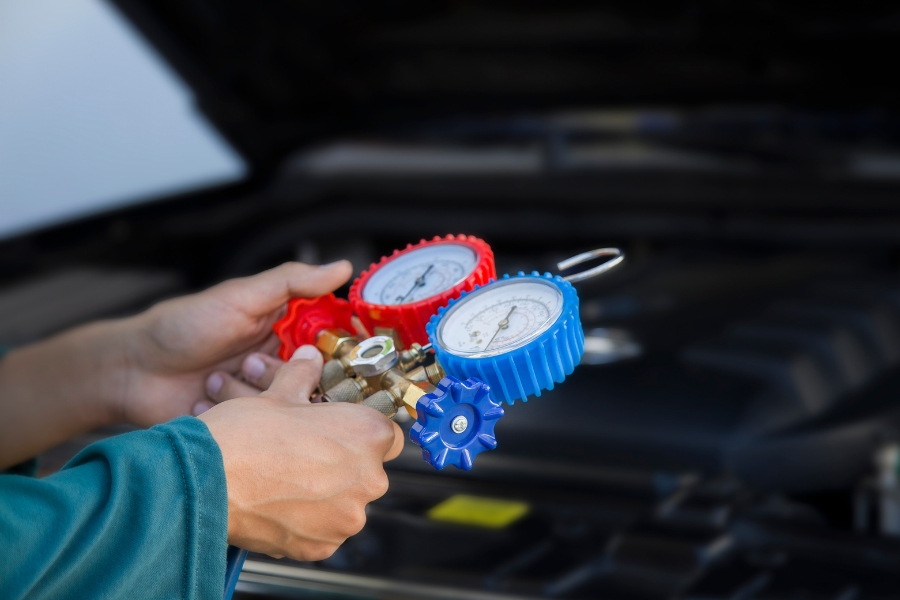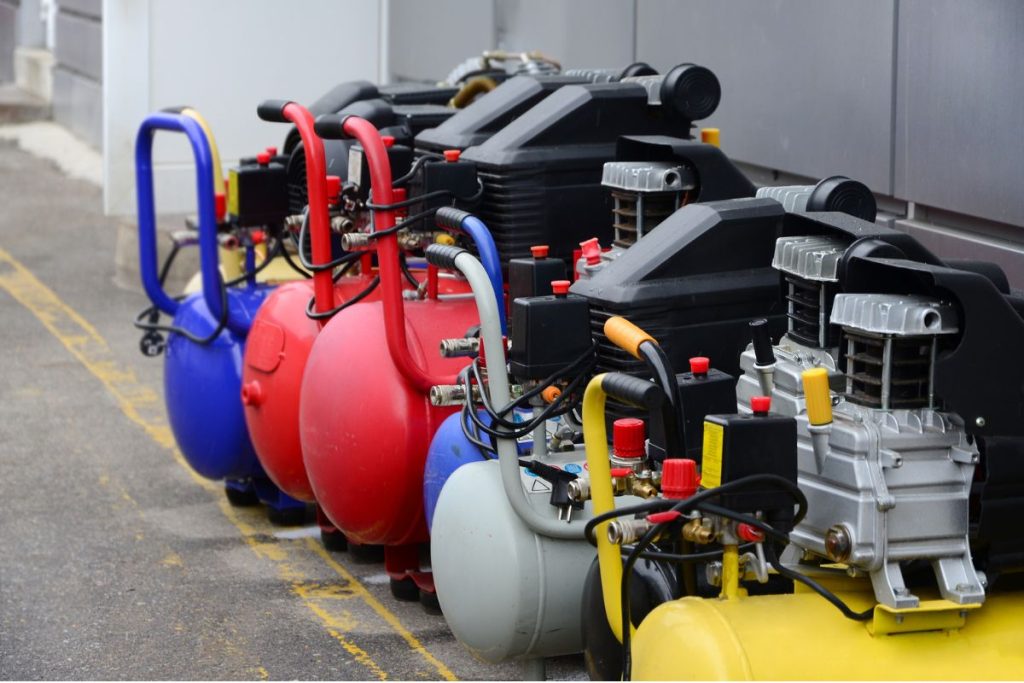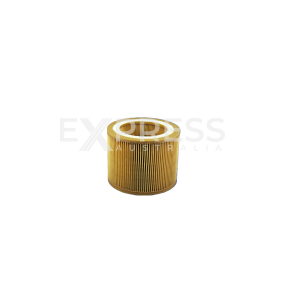As someone who has spent years working with air compressors and maintaining compressed air systems, I’ve seen first-hand the impact of worn parts on efficiency and performance. Whether you’re managing a small piston compressor or a heavy-duty rotary screw compressor, understanding how to identify and replace worn compressor parts is essential for maintaining your equipment’s reliability. In this guide, I’ll walk you through the key steps, share insider tips, and explain why investing in high-quality replacement compressor parts can save you both time and money.
In This Article
- Why Routine Maintenance Matters
- Signs of Worn Compressor Parts
- Essential Compressor Parts to Monitor
- Safety Precautions and Procedures
- How to Replace Worn Parts
- Troubleshooting Common Issues
- Tips for Buying Replacement Air Compressor Parts
- Maintenance Schedules and Service Plans
- Prolonging the Life of Your Compressor Parts
- Contact Us for Expert Advice
Why Routine Maintenance Matters for Your Air Compressor
Routine maintenance is the cornerstone of efficient compressed air systems. Maintaining the oil separator is crucial to prevent contamination and ensure proper system functionality. Neglecting small issues like clogged filters or worn belts can escalate into significant problems, increasing downtime and maintenance costs. Regular checks help prevent failures and keep your air compressor running efficiently, ensuring your equipment meets the demands of your operation.
Signs of Worn Compressor Parts
Worn compressor parts can manifest in various ways, including:
- Unusual noises: Grinding, knocking, or hissing sounds.
- Reduced performance: Decreased airflow or inconsistent pressure.
- Increased energy consumption: A drop in efficiency leading to higher energy bills.
- Visible damage: Cracks, leaks, or wear on components like the compression chamber or hoses.
- Oil contamination: Dark or dirty compressor oil indicating degraded seals or filters.
Essential Compressor Parts to Monitor
Knowing which essential compressor parts to monitor can streamline your maintenance routine. Here’s a breakdown of critical components:
Filters
Filters, such as air filters and oil separators, play a vital role in maintaining air quality and preventing contamination. Replace clogged or damaged filters to ensure optimal airflow and protect your compressed air system from debris.
Belts
In belt-driven compressors, belts transfer power from the electric motor to the compression mechanism. Look for signs of fraying, cracking, or slipping, and replace belts that show significant wear.
Valves
Suction and discharge valves regulate airflow within the compression chamber. Faulty valves can cause pressure loss and reduced efficiency. Regularly inspect them for wear and replace as necessary.
Oil and Oil Filters
For lubricated compressors, clean oil filters and high-quality compressor oil are crucial. Contaminated oil can lead to overheating and component wear. Replace oil filters during routine maintenance and ensure oil levels are within recommended ranges.
Air Tanks and Pressure Gauges
The air tank stores compressed air, while the pressure gauge monitors system pressure. Inspect tanks for rust or leaks and ensure gauges are calibrated. Replace damaged tanks and faulty gauges to maintain safe operation.
Safety Precautions and Procedures
When working with air compressors, it’s essential to follow safety precautions and procedures to prevent accidents and injuries. Here are some guidelines to ensure a safe working environment:
- Wear protective gear: Always wear safety glasses, gloves, and a face mask when working with air compressors to protect yourself from flying debris and compressed air.
- Ensure proper ventilation: Make sure the work area is well-ventilated to prevent the accumulation of compressed air and oil fumes.
- Follow lockout/tagout procedures: Before performing maintenance or repairs, ensure the air compressor is shut off and locked out to prevent accidental start-ups.
- Use proper lifting techniques: When handling heavy air compressor parts or equipment, use proper lifting techniques to avoid injuries.
- Regularly inspect equipment: Regularly inspect air compressor equipment and parts for signs of wear and tear, and replace them as needed to prevent accidents.
By adhering to these safety precautions, you can create a safer working environment and reduce the risk of injuries when working with compressed air systems.
How to Replace Worn Parts
Replacing worn parts requires careful planning and adherence to safety protocols:
- Turn off the power: Disconnect the air compressor from the power source to prevent accidents.
- Depressurise the system: Release any stored pressure in the holding tank.
- Identify the faulty component: Use the manual and inspect the system to pinpoint worn parts.
- Install the replacement: Remove the damaged component and replace it with a compatible part.
- Test the system: Reconnect the power, pressurise the system, and check for leaks or irregularities.
You may also like: Professional vs. DIY Compressor Maintenance
Troubleshooting Common Issues
Air compressors can experience various issues that affect their performance and efficiency. Here are some common problems and troubleshooting tips:
- Low air pressure: Check the air filter, inlet air filter, and air tank for blockages or leaks. Ensure the compressor is properly sized for the application.
- Oil leaks: Inspect the oil filter, oil separator, and compressor oil lines for signs of leaks or damage. Replace the oil filter and oil separator as needed.
- Compressor overheating: Check the cooling system, including the air filter and oil cooler, for blockages or damage. Ensure proper ventilation and airflow around the compressor.
- Air leaks: Inspect the air tank, pipes, and fittings for signs of leaks or damage. Replace the air tank or pipes as needed.
- Compressor not starting: Check the power supply, motor, and compressor controls for issues. Ensure the compressor is properly sized for the application.
By addressing these common issues promptly, you can maintain the efficiency and reliability of your air compressors.
Tips for Buying Replacement Air Compressor Parts
Choosing the right replacement compressor parts ensures compatibility and durability. Here’s what to keep in mind:
- Match specifications: Ensure parts like oil filters, check valves, or pressure switches meet the requirements of your system.
- Consider performance: Opt for parts designed for efficient operation to reduce maintenance costs.
- Shop local: Australian-owned suppliers like Express offer quality parts at competitive prices with dedicated support.
Maintenance Schedules and Service Plans
Regular maintenance is crucial to ensure the longevity and efficiency of air compressors. Here are some maintenance schedules and service plans to follow:
- Daily checks: Check the air filter, oil level, and compressor controls daily to ensure proper operation.
- Weekly checks: Inspect the air tank, pipes, and fittings for signs of leaks or damage. Check the compressor oil and filter for contamination.
- Monthly checks: Perform a thorough inspection of the compressor, including the motor, cooling system, and controls.
- Quarterly maintenance: Replace the air filter, oil filter, and compressor oil as needed. Inspect the compressor belts and pulleys for signs of wear.
- Annual maintenance: Perform a comprehensive maintenance check, including the compressor, motor, and controls. Replace the compressor oil and filter as needed.
By adhering to these maintenance schedules, you can ensure your air compressors operate efficiently and have a longer lifespan.
Prolonging the Life of Your Compressed Air System
Preventive maintenance can extend the lifespan of your compressor parts. Follow these tips:
- Monitor duty cycles: Avoid overloading your system beyond its capacity.
- Keep it clean: Regularly clean components to minimise contamination.
- Check for air leaks: Repair leaks promptly to maintain system pressure.
- Schedule professional servicing: Periodic inspections by experts can identify potential issues early.
You may also like: Top Signs Your Air Compressor Needs Repair
Contact Us for Expert Advice
Maintaining a compressed air system can feel overwhelming, especially when identifying and sourcing the right replacement compressor parts. If you’re unsure where to start or need tailored recommendations, contact Daniel today for expert guidance. As an Aussie-owned supplier, we’re committed to helping you find cost-effective solutions that keep your equipment running efficiently.






 ABAC 6211473950 Compressor Air Filter Equivalent
ABAC 6211473950 Compressor Air Filter Equivalent